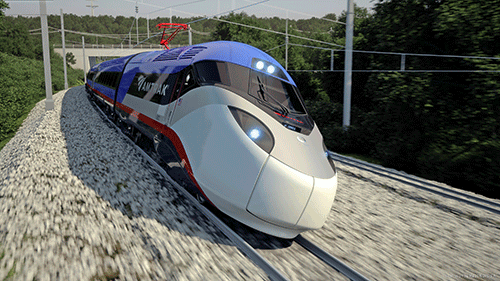 Alstom is certainly no newcomer to high-speed rail, having pioneered its use across Europe and, indeed, the UK with its Class 373 Eurostars, Britain’s first very high speed train. With a fleet of around 1,000 high-speed trains operating in 20 different countries and across 16 borders, Alstom Avelia trains carried an estimated four billion passengers during 35 years of frontline service.
Alstom is certainly no newcomer to high-speed rail, having pioneered its use across Europe and, indeed, the UK with its Class 373 Eurostars, Britain’s first very high speed train. With a fleet of around 1,000 high-speed trains operating in 20 different countries and across 16 borders, Alstom Avelia trains carried an estimated four billion passengers during 35 years of frontline service.
Calling on nearly four decades of experience, Alstom has positioned itself as a world leader in innovation. Never has this been more apparent than in the company’s native France, where its first TGV was introduced in 1981, and set again the world speed record on rail 26 years later in co-operation with SNCF. A modified double-deck TGV secured this status by hitting a top speed of 357.2mph under test conditions while running on a newly built but yet-to-be-opened high-speed line between Strasbourg and Paris in 2007.
This test allowed an increase in the TGV’s maximum speed in passenger service to 200mph, the first in the world.
Complementing the TGV is the company’s AGV trainsets, which entered service in Italy in 2012. Part of the Avelia range, these trains can reach speeds in commercial service of up to 220mph (360kph). It is also the first train to combine articulated bogies with distributed traction, providing the same ride quality benefits as it does in Alstom’s concentrated traction trains. And this concern for passenger experience and comfort also explains the importance of other Alstom technologies such as tilt.
Closer to home and Alstom also supplied some of the UK’s most high-profile, high-speed trains, including 56 Class 390 Pendolinos, in service with Virgin Trains on the West Coast Main Line, and 31 Class 373 Eurostars on High Speed 1.
Also part of the Avelia range, the Pendolino heralded the arrival of tilting technology in the UK, developed from British Rail’s experimental Advanced Passenger Trains, enabling them to run at up to 125mph on curved conventional track. Meanwhile, the Eurostars run at speeds of up to 186mph on HS1, which was built to European gauge, and is much straighter.
Alstom’s tilting technology has been taken a step further by its Avelia Liberty high-speed train, ordered by Amtrak in August to run on the Northeast Corridor (NEC) line between Boston and Washington DC. Unlike the AGV and the Pendolino, the Avelia Liberty is equipped with contracted traction and is capable of running at 186mph with tilting bogies and at 220mph with standard ones.
The tilting technology is key to delivering a good passenger experience on sinuous rail lines. Much like the West Coast Main Line here in the UK, the NEC has curvy conventional lines that the new train will have to run on. Tilt enables much faster running over these tracks, while delivering excellent rider comfort.
With a well-deserved reputation for delivering high-speed trains to run on both conventional track and designated high-speed lines, Alstom is monitoring developments closely as it awaits next year’s announcement of rolling stock specifications for HS2.
Invitations to Tender are expected to be issued in the spring, with Phase 1 of HS2 set for completion in 2026.
“Alstom is the only train manufacturer to have such a wide range of solutions to choose from,” High Speed Trains Portfolio Director Jamie Borrell tells RAIL.
“The passenger is always central to our designs. Tilt and articulation are key technologies that improve the passenger experience and ride quality, and we’re the first to fit tilt to very high speed trains. We are very proud of the Amtrak contract, as NEC is a complex line. We are combining high speed with heavy freight traffic, so we needed to find a solution to enhance speed and comfort while running on heavy duty rails.
“But every case is different, and this is the force of the Avelia range. There may be an Alstom tilting design that works in the UK and HS2. Or it could be a very different train, such as double-decker cars, that would run on HS2 but not conventional lines.
“The AGV would also be an interesting solution. With distributed power and articulated bogies, it gives us other possibilities. Whatever the challenge, Alstom’s Avelia range features solutions to suit all scenarios.”















Login to comment
Comments
No comments have been made yet.